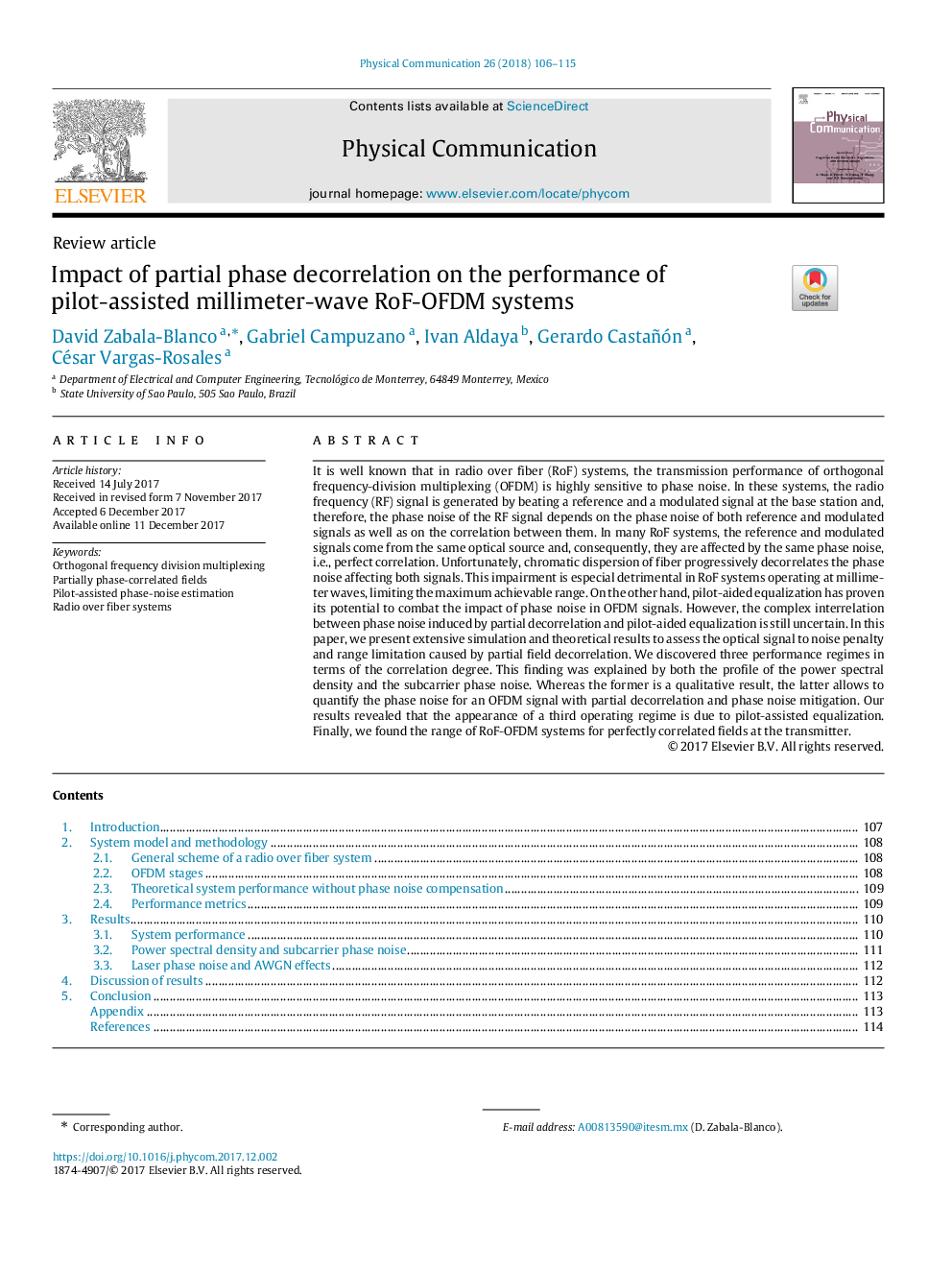| Article ID | Journal | Published Year | Pages | File Type |
|---|---|---|---|---|
| 6889180 | Physical Communication | 2018 | 10 Pages |
Abstract
It is well known that in radio over fiber (RoF) systems, the transmission performance of orthogonal frequency-division multiplexing (OFDM) is highly sensitive to phase noise. In these systems, the radio frequency (RF) signal is generated by beating a reference and a modulated signal at the base station and, therefore, the phase noise of the RF signal depends on the phase noise of both reference and modulated signals as well as on the correlation between them. In many RoF systems, the reference and modulated signals come from the same optical source and, consequently, they are affected by the same phase noise, i.e., perfect correlation. Unfortunately, chromatic dispersion of fiber progressively decorrelates the phase noise affecting both signals. This impairment is especial detrimental in RoF systems operating at millimeter waves, limiting the maximum achievable range. On the other hand, pilot-aided equalization has proven its potential to combat the impact of phase noise in OFDM signals. However, the complex interrelation between phase noise induced by partial decorrelation and pilot-aided equalization is still uncertain. In this paper, we present extensive simulation and theoretical results to assess the optical signal to noise penalty and range limitation caused by partial field decorrelation. We discovered three performance regimes in terms of the correlation degree. This finding was explained by both the profile of the power spectral density and the subcarrier phase noise. Whereas the former is a qualitative result, the latter allows to quantify the phase noise for an OFDM signal with partial decorrelation and phase noise mitigation. Our results revealed that the appearance of a third operating regime is due to pilot-assisted equalization. Finally, we found the range of RoF-OFDM systems for perfectly correlated fields at the transmitter.
Related Topics
Physical Sciences and Engineering
Computer Science
Computer Networks and Communications
Authors
David Zabala-Blanco, Gabriel Campuzano, Ivan Aldaya, Gerardo Castañón, César Vargas-Rosales,
